The Ultimate Guide to Sanitary Pumps
If you handle sensitive products like food or pharmaceuticals, your priority is a sanitary pump that conducts transfers without contamination and is easy to clean and sterilize.
In this comprehensive guide, we’ll delve into the world of sanitary pumps and dissect every aspect. Whether you’re just seeking to grasp the basics or aiming for a deeper understanding, this guide is tailored for you.
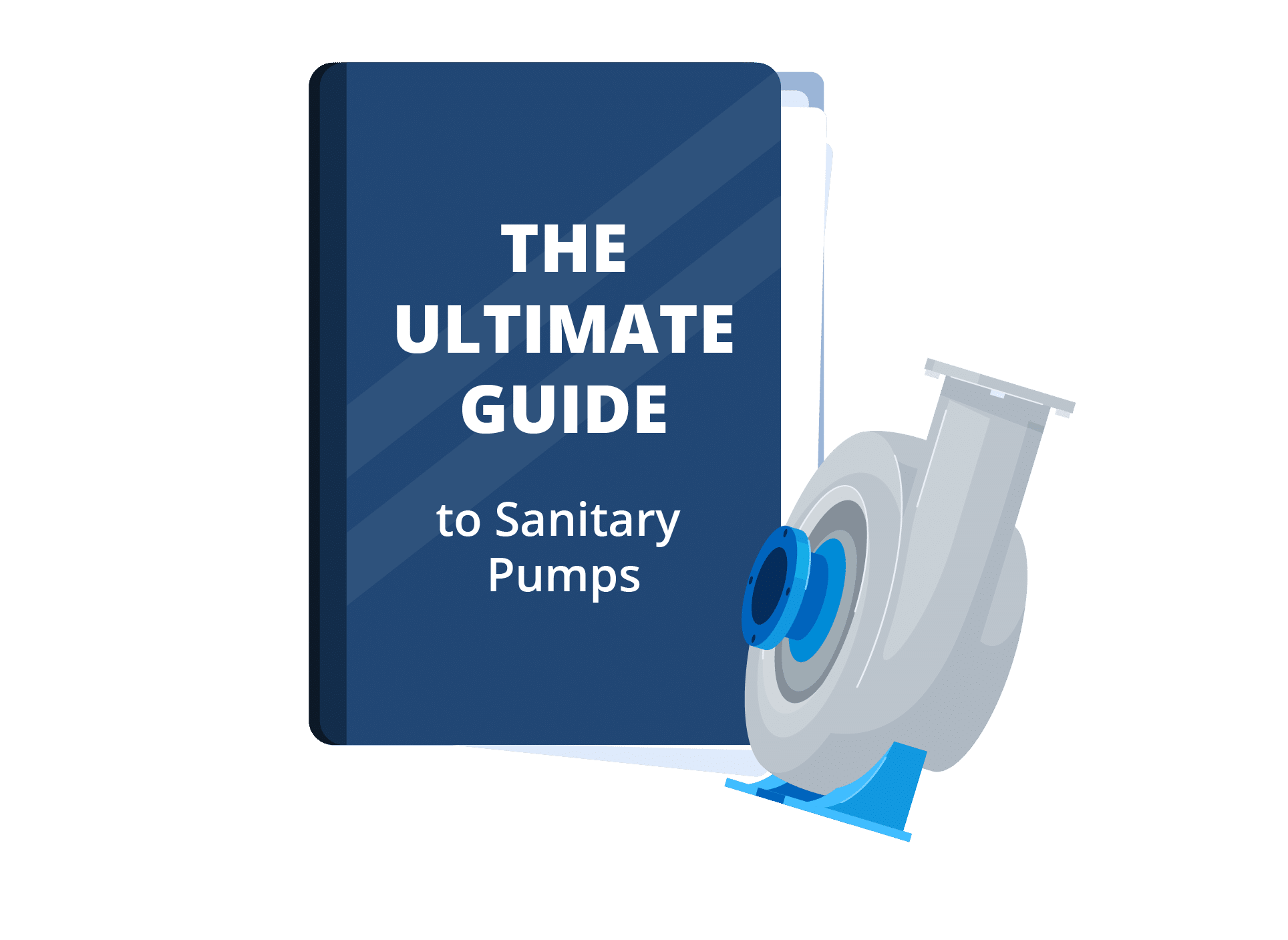
You also require a pump that doesn’t “cough” or leak during operations, one that won’t take your business through the dreaded downtime.
Unfortunately, the noises, leaks, and contamination may happen at some point, whether due to negligence or factors beyond your control. They can disrupt your operations, a scenario every pump owner hopes to avoid.
On the positive side, when your pump operates flawlessly, product contamination diminishes, productivity increases, and efficiency becomes the norm.
The promise of uninterrupted operations is a game-changer because every lost drop or lost energy is a loss for your business. That’s why it’s crucial to understand how sanitary pumps operate and how to maintain and troubleshoot them.
We’ve curated engaging information for you, and we’ll cover topics such as:
- The basics of sanitary pumps and where they’re applicable
- The efficiency of sanitary pumps in performing their tasks
- Types of sanitary pumps and what Sanitary Fittings offers
- Factors to consider when installing sanitary pumps
- Common pump problems and troubleshooting strategies

CHAPTER 01
Introducing Sanitary Pumps

CHAPTER 02
What are Sanitary Pumps?

CHAPTER 03
What are the Benefits of Using Sanitary Pumps?
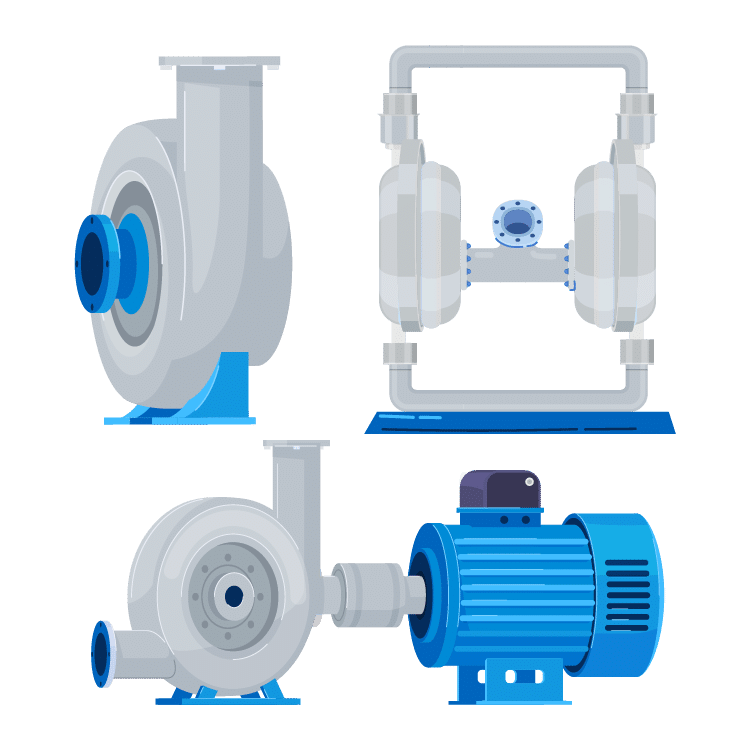
CHAPTER 04
What are the Different Types of Sanitary Pumps?
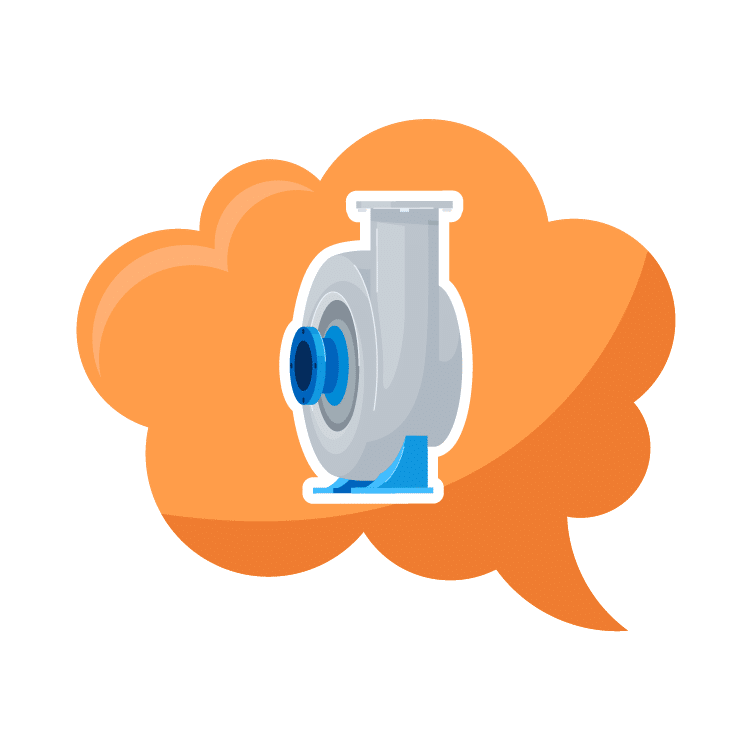
CHAPTER 05
Factors to Consider When Choosing a Sanitary Pump
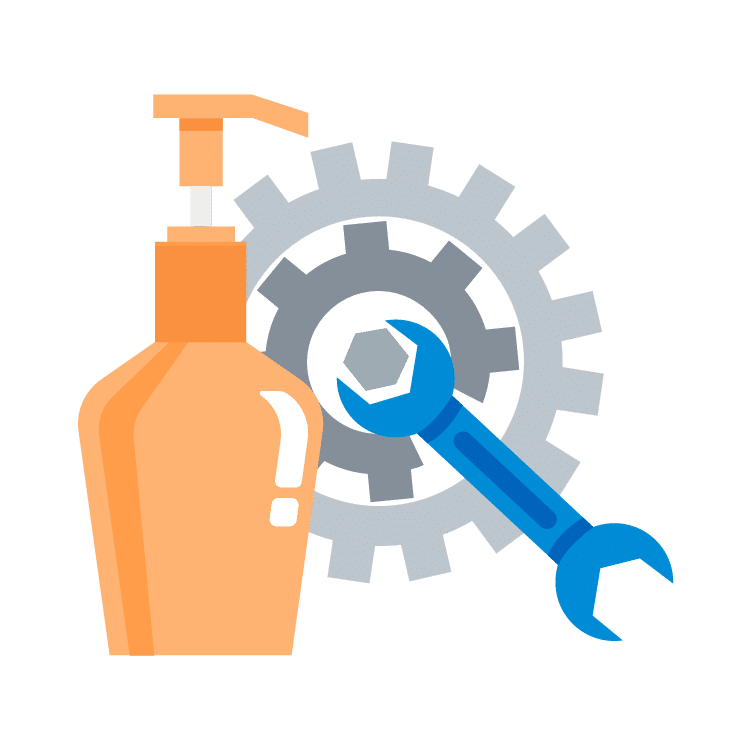
CHAPTER 06
Installation and Maintenance of Sanitary Pumps

CHAPTER 07
What are Some Common Problems with Sanitary Pumps?
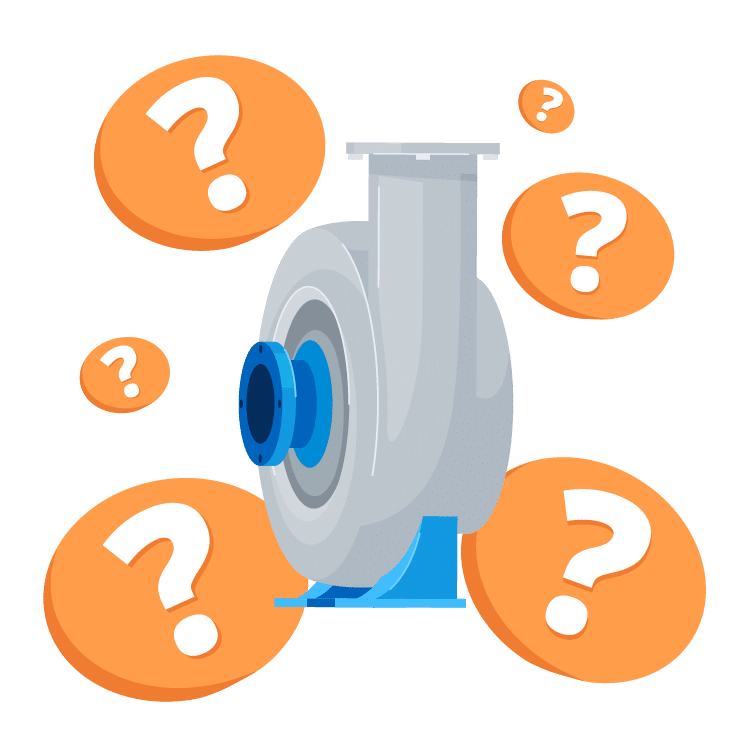
CHAPTER 08
Troubleshooting Sanitary Pumps
CHAPTER 01
Introducing Sanitary Pumps
Sanitary pumps are specifically designed to uphold strict cleanliness, safety, and sanitary standards, making them suitable for processes involving sensitive products.

One thing about their design is that they’re meticulously tailored to handle different fluids without corrosion or breakdown.
Some key aspects to consider when selecting a sanitary pump include flow rate, pressure range, power source type, and size. Material construction is vital, too, as it must comply with industry regulations.
Sanitary pumps leverage advanced technology, such as variable frequency drives (VFDs), to enhance efficiency and prevent wear and tear.
Moreover, when integrated with automated systems like Programmable Logic Controllers (PLCs), sanitary pumps offer precise control over fluid movement, minimizing errors that come with manual operation.
The advantages of sanitary pumps over non-food grade ones include superior hygiene due to a high-temperature tolerance and the ability to handle corrosive substances.
Why This Is Important: The correct selection of these pumps is pivotal to maximize performance, mitigate costs, and prevent issues related to repairs or replacements.
CHAPTER 02
What Are Sanitary Pumps?
Sanitary pumps, also known as hygienic pumps, are a specialized type of equipment designed to meet stringent sanitation standards. They play an essential role in hygienic applications, such as the food, beverage, pharmaceutical, and personal care industries.

These pumps are engineered to transfer liquids, semi-liquids like mayonnaise, and suspensions such as cough syrups, without causing contamination.
Their design ensures no product residue remains inside the pump after use, eliminating the risk of cross-contamination and ensuring maximum product quality and safety.
Sanitary pumps come in a variety of types, including centrifugal, positive displacement, air-operated diaphragm, and magnetic drive pumps.
Each type is suitable for different applications based on the nature of the product, flow rate requirements, and the degree of delicacy required in product handling.
Centrifugal pumps are the most common type of sanitary pump due to their basic design, versatility, and efficiency. They handle a wide range of fluids with low to high viscosities, and they often attain a high flow rate at relatively low pressures.
In terms of construction, sanitary pumps are often made of high-grade stainless steel or other non-reactive materials such as copper.
The internal surface of these pumps is crevice-free and polished to a mirror finish (electropolishing) to reduce the risk of bacteria growth.
The right sanitary pump makes a difference in the efficiency and quality of your production process. However, choosing the right type requires you to understand factors such as the viscosity and abrasiveness of the substance being pumped.
TOP-FLO is a proven name in the sanitary process and equipment industry. The brand’s sanitary centrifugal pumps are easy to install, clean, and operate, and they can transfer products over a wide range of viscosity and head.
Head is the maximum height a pump can raise a fluid against gravity, and it’s a measure of its power. The more pressure a pump can generate, the greater the head achieved.
With this knowledge, you can select a sanitary pump that not only meets your production requirements but also upholds the highest levels of hygiene, safety, and efficiency.
CHAPTER 03
What Are the Benefits of Using Sanitary Pumps?
With the assurance that comes from using quality pumps, your products will meet safety requirements without compromising their integrity.

Sanitary pumps are the ideal choice for food and beverage processing applications due to their benefits, which include:
- High level of hygiene: They’re easy to clean and maintain. TOP-FLO sanitary pumps are suitable for use in clean-in-place (CIP) installations, enabling self-cleaning and sterilization without dismantling them.
- Maintain product integrity: They handle products with care, thereby protecting delicate products such as whipped cream and sauces from losing their texture and flavor.
- Highly durable: Many models feature stainless steel construction which makes them resistant to corrosion when pumping abrasive products like spice mixes.
- Versatile: They handle different types of products ranging from low to high viscous fluids, meaning they can meet diverse production requirements.
It’s also worth noting that sanitary pumps are highly efficient.
Definition: Efficiency refers to how well a pump uses energy to perform its tasks.
Their efficiency can be:
- Hydraulic: How well a pump converts energy into pressure that can transfer the product from one point to another.
- Volumetric: How well a pump can deliver the intended volume of liquid without leakage and other internal losses.
- Mechanical: How well a pump converts mechanical energy into hydraulic energy without losses from factors such as friction.
The higher the efficiency, the less energy is used, which translates to significant cost savings. This ensures your pump remains in optimal condition for long, reducing the need for frequent repairs.
CHAPTER 04
What are the Different Types of Sanitary Pumps?
Sanitary pumps come in many styles and sizes, so it’s important to choose the right one for your specific application.
In order to determine the right pump for your needs, a pump curve is helpful. It’s a graphical representation of how a sanitary pump will operate under different conditions.

Let’s look at the types of sanitary pumps.
1 – Centrifugal Pumps
Centrifugal pumps incorporate an impeller that rotates within an enclosed casing. This type of pump utilizes centrifugal force to generate suction, propelling fluids through a tube at high speed.
These pumps find application in food and beverage processing due to their cost-effectiveness and capacity to offer high flow rates with minimal maintenance.
Sanitary Fittings has a sanitary pump selection that’s applicable in the dairy, food, beverage, pharmaceutical, and other sanitary industries.
Centrifugal pumps are suitable for pumping liquids with low to medium viscosity. They can handle a wide range of liquids, such as water, milk, beer, and cough syrup, making them suitable for a wide range of products.
TOP-FLO sanitary pumps cater to a viscosity of up to 200 centipoise (cp).
The two types of centrifugal pumps are:
- Single stage: They have one impeller and are applicable for processes that require pumping at low pressure. A good example is a pump that transfers beer from a keg to the taps at the bar counter.
- Multi-stage: They use multiple impellers depending on the number of stages involved. For example, a three-stage pump will use three impellers. Multi-stage pumps are suitable where high pressure is required, such as pumping water in high-rise buildings.
Impellers come in three types: open, semi-open, and closed. Choosing the right impeller will depend on factors such as the material and viscosity of the liquid you want to pump.
The diameter is also important. For example, the TF-C328 Centrifugal Pump has a max impeller diameter of 8.000” while TF-C114 Centrifugal Pump has a maximum of 4.000”.
Your pump comes with a new impeller, but from time to time, they need to be replaced. Replacement Centrifugal Pump Impellers will fit not only TOP-FLO pumps but also pumps from other major suppliers.
2 – Positive Displacement (PD) Pumps
Positive displacement (PD) pumps move contents by first trapping a certain amount, then forcing it into the discharge pipe after a while. These types of pumps provide a constant flow regardless of the pressure, making them suitable for processes that require precise flow control.
They use rotating gears or pistons to transfer the product at lower flow rates than centrifugal pumps, meaning they can handle thick liquids like chocolate better.
Examples of positive displacement pumps are:
- Piston pumps
- Diaphragm pumps
- Rotary lobe pumps
- Peristaltic (hose) pumps
- Progressive cavity (PC) pumps
- Gear pumps
3 – Air-Operated Double Diaphragm Pumps
Air-operated Diaphragm (AODD) pumps use compressed air as the power source. The compressed air is moved from one diaphragm to the next.
The back-and-forth motion ensures that as the substance is leaving one diaphragm into the discharge pipe, the other diaphragm is simultaneously being filled with the substance.
These pumps can transfer most types of liquids, from those with very thin viscosities to highly viscous ones, such as slurries. They can also handle abrasive and corrosive fluids such as ammonia and sulphuric acid.
AODD pumps are self-priming, meaning they can automatically draw fluid into the pump without external assistance.
They’re also portable and, therefore, best for mobile setups, thanks to their design that uses air. This makes them suitable for temporary use in places such as construction and mining sites.
Besides the three pump types, there are magnetic drive (mag drive) pumps used in pharmaceutical, chemical, and specialty manufacturing (production of special products such as radiopharmaceuticals).
There are also hygienic gear pumps used in sensitive processes where precise flow control of the substance being pumped is necessary.
With the above types of pumps in mind, you’ll be able to select the most efficient pump, helping you deliver quality products while keeping costs down.
CHAPTER 05
Factors to Consider When Choosing a Sanitary Pump
When selecting a sanitary pump, you must consider several factors to ensure the best solution for your application.
Sanitary standards are essential; each application should adhere to all industry regulations and requirements of the product being pumped.

1 – Clean In Place (CIP) Capability
The surface should be easy to clean and sterilize. It should be smooth and without crevices in order to prevent germs from lodging there.
TOP-FLO sanitary centrifugal pumps are suitable for use in CIP installations. This feature enables fast and effective cleaning without taking down the components.
2 – Non-Reactive Construction Materials
Look for a pump made of a non-reactive material, which is important in order to avoid contaminating the product.
The most popular choice is stainless steel. It’s favored due to its durability, corrosion resistance, heat tolerance, and hygienic properties.
3 – Pump Size
Choosing the correct pump size—though tricky—is imperative to achieve operational efficiency and save costs.
Using an oversized or undersized pump can lead to issues such as pump cavitation, noise, vibration, and increased energy consumption.
In order to choose the right pump size, consider factors such as:
- Flow rate requirements: How much fluid needs to be transferred in a specific period
- Pressure requirements: The pressure needed to move the liquid across all systems
- Fluid’s viscosity: The thicker the liquid, the larger the pump it will need, and vice versa
4 – Energy Efficiency
In today’s world, energy consumption is on the rise, and each business is looking for ways to cut operational costs.
The solution is to look for pumps with high energy efficiency ratings. They’re engineered to minimize energy loss while delivering the required flow and pressure, thereby reducing the energy costs and impact on the environment.
5 – Compliance with Regulations
Ensure the pump complies with regulations, such as those set by the Food and Drug Administration.
This will ensure that the pump meets the necessary safety and quality requirements for your industry, avoiding legal issues that may damage your business reputation.
6 – Future Upgrades or Expansions
If you’re considering expanding your facility or processes in the near future, it’s important that you choose sanitary pumps that can accommodate increasing production needs.
You can do this by calculating the pump’s capacity to determine how much it can handle.
Pumps with interchangeable components also allow for easy adjustments in case of high production. It’s also more cost-effective to change components rather than buy a new pump.
Even with all the above factors to consider, research current trends within your industry to get insight into which solutions work best with new technologies.
With careful thought and research, you can make sure you choose the right sanitary pump that meets your requirements, now and in the future.
CHAPTER 06
Installation and Maintenance of Sanitary Pumps
Installing and maintaining sanitary pumps doesn’t have to be a hassle. With the right know-how, you can ensure your setup runs smoothly and efficiently.

The first thing is to ensure that the location of the pump will be easily accessible. Don’t station it in a constricted area where it will be difficult to access for cleaning and maintenance.
Before installing the pump, use a sturdy base plate as the foundation. This ensures that the pump is properly secured to prevent vibration, which may cause misalignment of the components.
Install the tubes, valves, sealing, and gaskets properly to prevent leaks and pressure drops. This will also prevent bacteria from getting in and contaminating the product.
“This is my second order and the experience was exceptional! Very good customer service and quality products. This is the only place I’m going to buy my fitting from in the future.” – Billy Cole, Verified Buyer
Lastly, ensure proper electrical wiring practices are followed to prevent the risk of electrical shock and fire hazards.
Once installed, follow these maintenance tips to keep pumps running efficiently and safely. The tips include:
- Checking for debris around impeller blades and strainers, if present
- Regularly inspecting for wear, leaks, and other damage
- Cleaning and sterilization of components that touch the product
- Lubrication of moving components such as bearings and seals
- Monitoring vibration levels during operation to detect irregularities
If you leave your pumps for too long without cleaning, they’ll start showing signs that they need cleaning. Ignoring the signs will cause deterioration of your pump’s performance.
Expert Tip: Don’t wait until your pump is clogged to clean it. Follow your industry’s regulations as to how often to clean and sterilize them.
For issues that arise during installation or while running the system, you can troubleshoot common problems or consult a qualified engineer about complex problems.
With this installation guide, you have all you need to set up your sanitary pump.
CHAPTER 07
What are Some Common Problems with Sanitary Pumps?
No matter how well you maintain your sanitary pump, there are common problems that could arise over time.
These problems can be avoided or fixed with the right knowledge and proactive maintenance practices.

Let’s look at these common problems:
1 – Leaking Seals
Seals are components that secure the rotating and non-rotating parts, preventing fluids from escaping outside the chamber.
To prevent leaking from the seals, ensure that during installation, they’re properly aligned to prevent loosening, and regularly lubricate them.
Make it a point to replace seals before they reach the end of their indicated service life, and use those made of quality material such as carbon or ceramic.
2 – Clogged Filters
Clogging occurs when debris builds up in the filter housing or the filter itself. This happens when the fluid is not filtered well before pumping.
Regularly replacing filters is important for preventing clogs from forming, and ensuring that the pump’s operation is not slowed down.
Additionally, using large-size filtration media can help reduce clogging issues by allowing more particulate matter to pass through instead of becoming trapped in the filter.
3 – Pump Cavitation
Cavitation happens when the pressure of the fluid drops below its vapor pressure, causing the formation of air bubbles that corrode the metal surfaces.
The situation creates an imbalance that causes vibration and noise, which damages components and leads to a loss of efficiency.
Cavitation can be caused by:
- High pump speed
- High suction lift
- Improper pump design
- Insufficient suction head
To prevent cavitation, choose a pump with the appropriate net positive suction head (NPSHa). Also, ensure that the pump speed and fluid temperature are low.
4 – Material Incompatibility
Material incompatibility is the interaction of materials in the pump in a way that causes disharmony. It happens when the physical and chemical properties of the pump’s construction materials and the product being pumped react.
The adverse reaction causes issues such as corrosion, degradation, and contamination of the product. Therefore materials such as stainless steel are a safe option.
TOP-FLO sanitary pumps are made from stainless steel to ensure that no reactions take place and contaminate the product.
5 – Loss of Pump Prime
Loss of pump prime is a condition where a pump can’t maintain the required suction to keep the impeller fully immersed in the liquid, causing loss of flow, inefficient pumping, and pump damage.
It happens due to air entrapment from leakage or improper sealing. A drop in the fluid level causes a sudden drop in pressure, resulting in the loss of pump prime.
To prevent this situation, ensure the pump is filled with the pumping fluid and check that the valves are secure to prevent the backflow of liquid. Both measures prevent entrapment of air, which causes loss of prime.
CHAPTER 08
Troubleshooting Sanitary Pumps
Having trouble with your sanitary pump? Troubleshooting these pumps is easier than you think. The process involves identifying and resolving issues that affect your pump’s performance.

- Seals, gaskets, and O-rings: Check for signs of wear or deformation to prevent the risk of leaking fluids and contamination.
- Clogs and blockages: Check for debris in the filters, filter housing, and pipes connecting to the pump.
- Prime and suction: Verify that the suction line is filled with fluid to prevent the formation of air pockets and loss of prime.
- Cavitation: Do a cavitation analysis by checking that the net positive suction head (NPSH) available is sufficient to prevent cavitation.
- Misalignment: You can identify if certain pump components are out of place by evaluating whether there are increased vibration and noise levels.
- Power and electrical components: If the pump is underperforming, check whether all external power sources are providing adequate current.
The video below is a visual guide on how to troubleshoot centrifugal pumps:
If troubleshooting fails, then consider consulting an experienced technician to diagnose complex issues. At this point, you may have to replace some parts or the entire unit if it’s beyond repair.
Sanitary Fittings: Your Source of Durable and Easy-To-Clean Sanitary Pumps
If your business deals with production processes that require thorough cleanliness and sterilization, you need a pump that operates seamlessly to avoid disruptions to your operations.
Contamination is the biggest fear in such a case because you’re dealing with sensitive products such as food. Any contamination is a loss to your business.
Sanitary pumps are the solution to curb this. They’re made of materials that won’t react with the products and are easy to clean and sterilize.
However, these pumps encounter problems from time to time, whether excessive vibration, low pressure, or blockages. It’s important that you know how they operate and how to maintain and troubleshoot them.
Sanitary Fittings has a reputation built on its sanitary and durable pumps, fittings, washdown systems, and other items. They’re easy to clean, energy-efficient, and will last long if you maintain them well.
Bonus: Sample our pump replacement parts if you ever need to replace worn-out components.
Need help selecting a pump? Contact us. Most of our pumps ship within one day with the TOP-FLO Ready-To-Go Program.
“Great service. We needed fittings overnight. I ordered at noon and they were at the plant site by 9:00 am the next morning.” – Anonymous, Verified Buyer

Take a look through our inventory and we’re confident you’ll find what you need.
If you do have any questions, please don’t hesitate to contact us. We would be more than happy to further explain any of the above or answer any specific inquiries you have about this important component.
